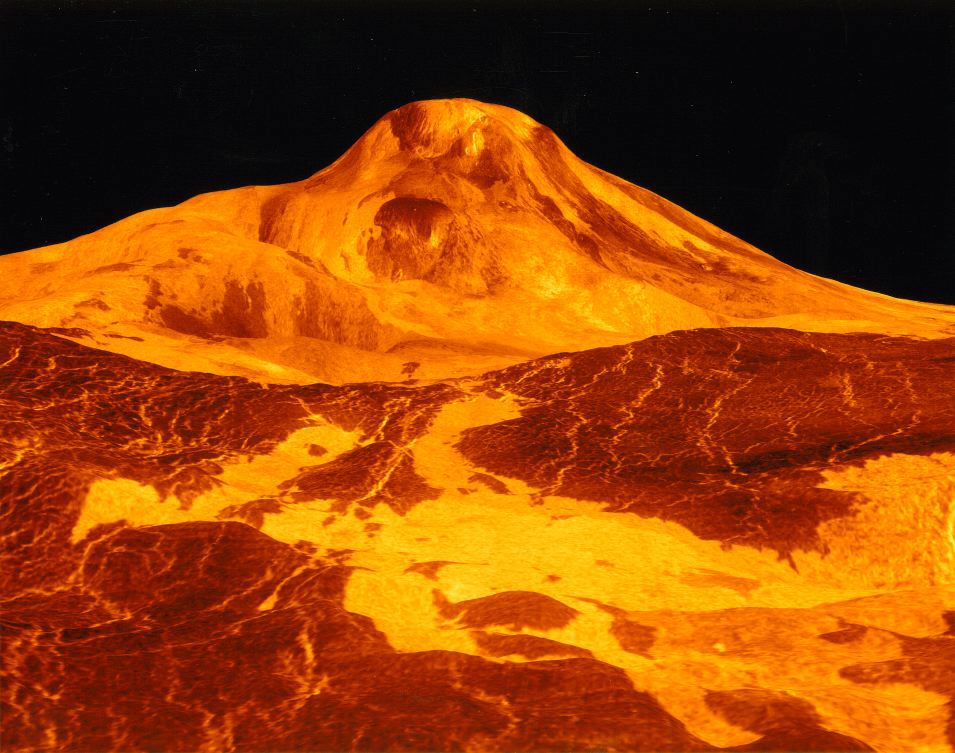Was Venus always a poison-shrouded inferno, or was it an Earth-like world that went to hell?

That’s the question that NASA hopes to answer within the next decade, when it will send two probes to visit our smoking-hot planetary neighbour that’s not named Mars.
The spacecraft, dubbed Veritas and Davinci+, will be tasked with scanning the surface of the planet and the composition of the thick clouds that surround it, NASA said in an announcement on Wednesday. The goal is to determine whether the planet’s surface is composed of tectonic plates like our own, and whether it once hosted liquid oceans.
Such discoveries would support the theory that Venus was the first habitable world in the solar system, before it became the nightmare it is today.

“These two sister missions both aim to understand how Venus became an inferno-like world, capable of melting lead at the surface,” NASA administrator Bill Nelson said Wednesday.
The probes will each cost an estimated US$500 million, and are expected to launch sometime between 2028 and 2030, NASA says. They’ll be the first NASA spacecraft to visit Venus since 1990, when the Magellan orbiter did a few laps around the planet before burning up in its atmosphere.
“It is astounding how little we know about Venus, but the combined results of these missions will tell us about the planet from the clouds in its sky through the volcanoes on its surface all the way down to its very core,” said Tom Wagner, NASA Discovery Program scientist. “It will be as if we have rediscovered the planet.”
Venus is the second planet from the sun, the hottest world in our solar system and the one closest in size to Earth. NASA describes it as a “runaway hothouse,” with surface temperatures that approach 500 C and a thick, toxic atmosphere composed of sulfuric acid and carbon dioxide, which creates intense air pressure on the surface. Hurricane-force winds also blow toxic clouds around the planet at high speed.
In other words, Venus would poison you, crush you, blow you away and burn you to a crisp if you ever set foot on it.
Those conditions have made it a daunting target for exploration, particularly when compared to our colder and more wind-blasted neighbour, Mars.

Get breaking National news
NASA says it’s time to start paying more attention to Venus, especially since it could help us better understand the Venus-like exoplanets that exist outside our solar system.
Veritas will use an advanced radar to chart the surface elevation of Venus so that NASA scientists can construct their own 3D map of the alien world. Veritas will also run infrared scans to determine the types of rock on the surface and to identify potentially active volcanoes that might be venting water vapour into the atmosphere.
Davinci+ will dive through the deadly atmosphere in what NASA calls a “descent sphere.” The probe will scan the atmosphere as it goes, measuring the noble gases and other elements present to see if there is evidence of evaporated oceans. It will also snap high-resolution photos of the planet’s “tesserae” — geological features that resemble Earth’s continents. These tesserae could reveal that plate tectonics are at work on the surface of Venus, just as they are on Earth.
The classically inspired mission names are also slightly tortured acronyms, according to the NASA news release. Veritas stands for Venus Emissivity, Radio Science, InSAR, Topography and Spectroscopy, while Davinci+ is short for Deep Atmosphere Venus Investigation of Noble Gases, Chemistry and Imaging. It’s unclear what the “+” stands for.
The missions were chosen for their feasibility and potential scientific value through NASA’s Discovery Program. They beat out two other proposals that would have sent probes to Io, a moon of Jupiter, and Triton, a moon around Neptune.

Venus saw a flurry of American and Soviet visitors in the early days of space exploration, beginning with a flyby from NASA’s Mariner 2 craft in 1962. Those visits dried up after Magellan in 1990, though Japan and the European Space Agency have sent a few probes since then.
NASA’s top scientist, Thomas Zurbuchen, hopes the new Venus missions will yield many exciting discoveries about our mysterious planetary neighbour.
“We’re revving up our planetary science program with intense exploration of a world that NASA hasn’t visited in over 30 years,” he said in NASA’s news release.
“We’re ushering in a new decade of Venus.”
—With files from The Associated Press










Comments